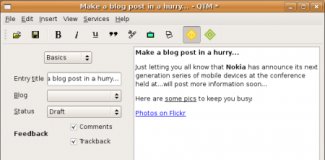

Previously in this laboratory for analysis of a single concatenation library from 16 cDNAs with a total length of 36 kb ( Andersson et al. These sites are electronically “cut” prior to computerĪssembly, and as a result each cDNA sequence is ultimately identified as an individually assembled contiguous sequence (contig).ĬCS represents an efficient alternative to oligonucleotide walking and deletion library construction and has been applied Recognition sites that were utilized when the clones were first isolated. The boundaries between individual cDNAs are recognized at the stage of computer editing by virtue of the restriction endonuclease Procedure, where multiple short DNA molecules (1.0–5.0 kb) are first ligated to form long DNA fragments, or concatemers, thatĪre then randomly sheared and sequenced ( Andersson et al. To facilitate the rapid, accurate, and efficient sequencing of cDNAs, we developed the concatenation cDNA sequencing (CCS) In addition, full-length cDNA insert sequences may provide more information, compared to ESTs, for annotationĪnd interpretation of the rapidly accumulating genomic sequences in the public databases. In contrast, full-length and high-quality sequence of the cDNA clones can potentially provide more accurate database comparisonsĪnd definitive alignments for determining gene structures, and can enhance the ability of different computer programs to predict 1996), they only contribute limited information about each clone because of their short length and generally low data quality. Although ESTs are powerful tools for geneĭiscovery, characterization of gene expression, and localization of certain homologies to genomic fragments ( Adams et al. That are generated from single DNA sequence reads from the termini of cloned cDNAs. The characterization of expressed sequences in the Human Genome Project has largely relied upon expressed sequence tags (ESTs) [All 65 cDNA clone sequences described in this paper have been submitted to the GenBank data library under accession nos. More nucleic acid and protein sequence similarity matches than expressed sequence tags (ESTs) for database searching. Our data indicate that full-length cDNA insert sequences provide significantly Sequences had matches to known protein sequences. In a protein similarity search, 27 clone sequences displayed significant matches, whereas only 20 of the end Of those 28 matched clones, 8 had corresponding end sequences that failed to identify Matches, 12 clones generated exact matches (≥98% identity), and 16 clones generated nonexact matches (57%–97% identity) toĮither known human or other species genes. Thirty-seven clones revealed no DNA database Computer analyses were carried out on 65 cDNA clone sequences and their corresponding end sequences toĮxamine both nucleic acid and amino acid sequence similarities in the databases. Method yielded accurate sequences and a similar efficiency compared with other shotgun libraries constructed from single DNAįragments (>20 kb). Sequencing (CCS), whereby multiple individual DNA fragments are sequenced simultaneously in a single shotgun library. A total of 100 kb of DNA derived from 69 individual human brain cDNA clones of 0.7–2.0 kb were sequenced by concatenated cDNA


 0 kommentar(er)
0 kommentar(er)
